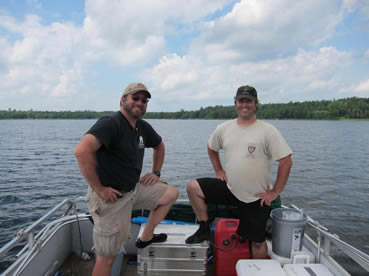FIELD NOTES
November 2011 Page 4
Genetic Responses of a sentinel species (Daphnia) to historic pH changes in Madison Lake, Minnesota
Billy Culver
In addition to working as a Research Assistant in Dr. Weider’s lab, I am pursuing my own research with regards to the genetic responses of organisms to environmental change. In particular, I use Daphnia as my research organism. Daphnia is an excellent organism to work with since the genome of Daphnia pulex has been fully sequenced and annotated. Daphnia, also have the advantage of being well researched, have an asexual and sexual life cycle, have short generation times, are relatively small, and easy to maintain. I will be studying the response of D. pulicaria to the changing pH conditions in Madison Lake, Minnesota. Using the fact that Daphnia lay diapausing eggs that settle to the bottom of lakes and become preserved in the sediments, we have taken core samples of the lake to obtain animals that were preserved up to 40+ years ago (i.e. termed “resurrection ecology”. The sediment will also be dated and analyzed for past pH conditions using diatom reconstruction.

Using a number of genetic and genomic methods, I am focusing my research on two gene families that may be involved with regulating an organism response to changing pH conditions: Carbonic Anhydrase and Chitin Synthase. I will be isolating these genes from the animals recovered from the sediments at different time and pH periods. Using these data, I will look to see if there is any variation in these genes and determine if they are correlated with pH change. Experimental manipulations of animals from low and high pH conditions and treatments will be conducted. This will allow me to determine if variation in these genes, in fact plays a role in tolerance to changing pH conditions. From an applied perspective, this “environmental genomics” approach coupled with “resurrection ecology” should provide clues as to how aquatic organism adapt to changing environmental conditions over time periods spanning several decades, and how such changing environmental conditions can impact the quality and health of aquatic ecosystems.
![]() or
or ![]()
Copyright © 2010-2011
The Board of Regents of the University of Oklahoma,
All Rights Reserved
The University of Oklahoma is an equal opportunity employer.